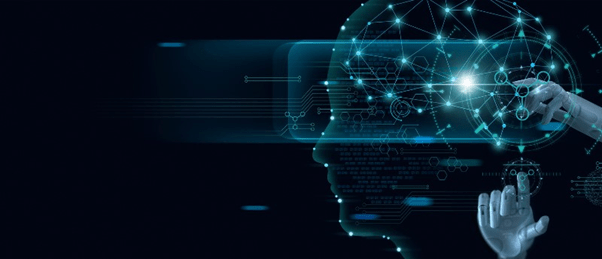A(I) neural miracle: paralyzed man recovers after an AI-led double neural bypass

Researchers from Northwell Health’s Feinstein Institutes for Medical Research find neural recovery in paralyzed man after AI-led double neural bypass, surgery and MRI derived brain maps.
In an unprecedented trial, Northwell Health’s Feinstein Institutes for Medical Research (NY, USA) implanted microchips into a paralyzed man’s brain. AI algorithms created a double neural bypass, restoring hand movement and sensations, with lasting improvements in the arm and wrist. Progress was revealed 4 months after a 15-hour surgery at North Shore University Hospital (NSUH) (NY, USA).
Professor Chad Bouton, Vice President of Advanced Engineering at Northwell Health and developer of the technology stated: “This is the first time the brain, body and spinal cord have been linked together electronically in a paralyzed human to restore lasting movement and sensation.”
“When the study participant thinks about moving his arm or hand, we ‘supercharge’ his spinal cord and stimulate his brain and muscles to help rebuild connections, provide sensory feedback, and promote recovery. This type of thought-driven therapy is a game-changer. Our goal is to use this technology one day to give people living with paralysis the ability to live fuller, more independent lives.”
Keith Thomas, 45, from Massapequa, New York, became the pioneering human to use the technology after a diving accident on July 18th 2020, which left him paralyzed from the chest down due to injuries at the C4 and C5 vertebrae. Due to the COVID-19 pandemic, Mr Thomas was isolated in the hospital for over 6 months but found hope when participating in Professor Bouton’s clinical trial.
Researchers and clinicians from the Feinstein Institutes’, including Dr Santosh Chandrasekaran and Dr Adam Stein, dedicated months to mapping out Mr Thomas’ brain using functional MRIs. This aided the identification of areas responsible for arm movement and hand sensation. In a demanding 15-hour surgery at NSUH, surgeons received real-time feedback from Mr Thomas while he was awake, providing information about sensations experienced in his hands as they probed portions of his brain’s surface.
Acquiring Mr Thomas’ images and his communication during the surgery allowed the researchers to precisely determine the implant locations. They successfully inserted two chips in the region responsible for movement and three more in the area responsible for touch and finger sensation in his brain. In the laboratory, Mr Thomas was connected to a computer through two ports protruding from his head. Using AI, the computer read, interpreted and translated his thoughts into action, forming the basis of thought-driven therapy and the double neural bypass approach.
The bypass began with Mr Thomas’ thinking about intentions such as moving his fingers, sending electrical signals from his brain implant to a computer. The computer then transmitted signals to flexible, non-invasive electrode patches placed over his spine and forearm muscles, promoting function and recovery. Tiny sensors at his fingertips and palm relayed touch information to his brain’s sensory area, restoring sensation. This double neural bypass allowed Mr Thomas to move his arms and feel his sister’s touch in the lab, marking the first sensation he’s experienced in three years since the accident.
“There was a time that I didn’t know if I was even going to live, or if I wanted to, frankly. And now, I can feel the touch of someone holding my hand. It’s overwhelming,” explained Mr Thomas. “The only thing I want to do is to help others. That’s always been the thing I’m best at. If this can help someone even more than it’s helped me somewhere down the line, it’s all worth it.”
Researchers report remarkable progress in Mr Thomas due to the novel approach, suggesting potential permanent damage reversal. His arm strength has more than doubled since joining the study, and he now experiences new sensations in his forearm and wrist, even without the system activated.
The aspiration is for the brain, body and spinal cord to re-establish communication, creating new pathways at the injury site through the double neural bypass, akin to a kidney’s regeneration after trauma or disease. With over one hundred million people globally experiencing movement impairment or paralysis, this trial seeks to restore lasting physical movement beyond the research lab and reinstate the sense of touch.




